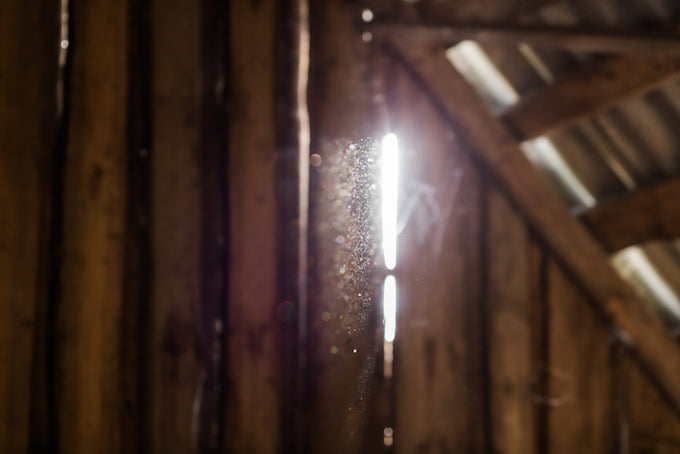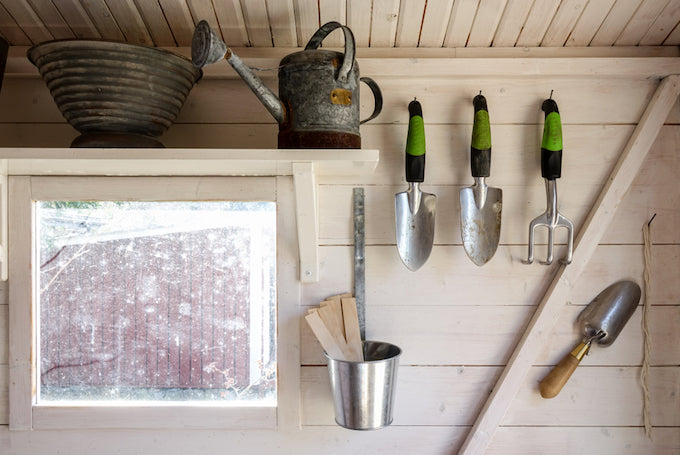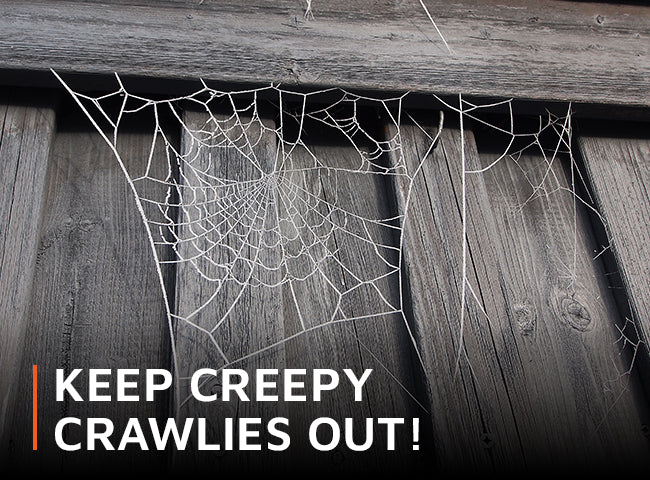Sheds can be a nightmare for an arachnophobe. They’re full of dark corners and dusty boxes for spiders and insects to call home.
In the American South, families would paint their porches a light shade of blue to ward off wasps and evil spirits. Some say spiders stay away from blue sheds - perhaps because blue paint used to be made with lye, a known insect repellent. And even if painting it doesn’t help, at least your shed will have a smart new make-over.
Another fabled spider-repellent is placing conkers in corners and by windows. Who knows if this is true, but at least you’ll be ready for a conker fight should the occasion arise.
If you’d rather not rely on old wives’ tales to keep spiders out, try our suggestions that really work.
Seal up gaps

Image source: J. Lekavicius
Spiders sneak in through tiny gaps and holes in the walls of your shed. New sheds should be relatively sound, but make sure to seal up joins and any obvious gaps.
Minimise gaps under doors by ensuring you have a door-frame with a lip to create a good seal. Try to keep the door and any windows closed as much as possible, especially during the early autumn when spiders are looking to move to a warm new home. As a bonus, this should keep your shed warmer, but make sure you still have some air flow to keep out damp.
Keep your shed neat and tidy

Image source: B.Forenius
Spiders love dark, small spaces where they won’t be disturbed. Make your shed less appealing by keeping it clean and tidy. Sweep often and, if you have hard to reach corners, regular vacuuming will help.
Try to avoid stacking boxes on the floor or close to walls, as this creates perfect gaps for spiders to hide out in. Seal up any boxes and store them in neat piles away from the sides of the shed.
And try not to add to the problem yourself. Wash or brush off any tools before putting them away, in case they’ve picked up any eight-legged hitchhikers.
Use a repellent

Image source: Shutterstock
Try spraying a spider repellent containing peppermint oil into corners, cracks and around any thresholds. Spray at least every 2-3 weeks, so the smell stays potent enough to ward off unwanted visitors. Apply even more often in peak spider season, like the beginning of autumn.
You can make a homemade repellent from 1 litre of water, 1 tablespoon of apple-cider vinegar, 3 drops of peppermint essential oil and 3 drops of lemon in a spray container. All of these ingredients can be used as natural cleaning products too, so tackle two jobs at once by chasing off the creepy-crawlies while keeping your shed spotless.
If you don’t have time to keep applying a scent-based repellent why not use a high-frequency sound emitter to deter pests. You won’t be able to hear it, but smaller creatures will be kept away.
Let your cat do the work

Image source: Chris Sargent/Shutterstock
Although their fame lies in mouse hunting, cats are one of the most effective spider catchers out there. If you have a feline friend, let it hang out in the shed every now and again - just try and be out of earshot when the spiders go crunch. To let your kitty have constant access to the shed you could install a cat flap.
Be aware that some spiders can bite your cat back, but most native spiders aren’t poisonous and won’t do any harm. There are a couple, though, so if you’re worried your cat might have been bitten a quick call to your vet is a good idea.
We hope you manage to keep your shed spider free. If you can’t keep them out, catch them humanely with a spider catcher and release them back into the garden.
Lead image: Shutterstock




